Friday, August 31, 2007
Thursday, August 30, 2007
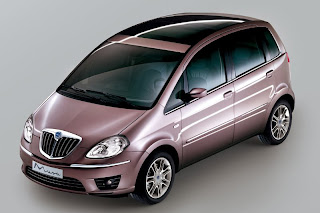


The New Musa will make its debut with a world preview in Venice. Successor to a winning model that in three years has won the hearts of many European motorists (in 2006 and 2007 it was Italy's best-selling compact MPV), the new car will again be a winner by offering the motoring world all the values of true Italian friendliness. It sets out to recreate a typical Italian atmosphere shape and content-wise, a mix of elegance and informality, punctilious yet disarming, luxury with a naturalness that makes everyone feel at ease. In short, the New Musa is the Italian option in the modern European compact scene, embodying concepts of good taste, warmth and generosity.
New styling in terms of elegance and functionality:
The New Musa has been restyled and is now even more up-to-date and attractive thanks to a number of styling cues that reflect the very latest market trends. And, in fact, this refined new look gives the car a greater size impression that target customers will certainly find attractive, given that in addition to an elegant, refined shape they can also appreciate improved functionality and space. Designed at the Lancia Style Centre, this model draws heavily on the classic canons of Lancia styling reinterpreted in a modern key consistent with trends in styling found in the premium car segment.
The front end has been enhanced with a number of chrome features underlining the new stylistic imprint while at the same time emphasising the model's impression of dynamism, an element that will be a key design feature for future Lancia cars. In the centre of the elegant chromed grille is the new Lancia logo, one that is reminiscent of the past but interpreted in a modern key, as is appropriate for a brand projected towards future challenges but at the same time proud of its traditional identity.
The very same harmony and stylistic consistency can be seen in the completely redesigned rear section. Perfectly in line with the new approach adopted at the front, the generously sized hatch is today an even more important feature providing two substantial improvements over the previous model. First, the luggage compartment is 70 litres larger while the loading deck has been lowered by 4 centimetres, making it easier to stow bags and suitcases. And again at the rear, the New Musa boasts new technological LED lights that, compared to traditional bulb-lit units, are more luminous and therefore safer, apart from aesthetic considerations.
Lastly, in addition to being enhanced by brand-new alloy wheels, the extremely elegant, clean-lined side surfaces have a new chromed moulding in which the outstanding feature is the Lancia logo mounted as if it were a real gemstone. The rounded lines and non-angular shape emphasise the cabin's friendly, protective nature, a ‘shrine’ promising safety and maximum comfort despite its compact size: it is only just over 4 metres long, 1.70 metres wide, 1.66 metres in height and with a wheelbase of 2.51 metres. So even though it is now longer, the New Musa is still a compact car outside, but with all the space of a flagship model inside.
In line with that unmistakable Lancia style seen in recent years, the New Musa offers drivers and passengers an environment marked by a combination of emotion and functionality, thanks to the modular seats that can be adjusted to suit many different positions. These sensations are also heightened by special attention to detail, the use of top-quality materials and creation of refined colour combinations between bodywork tints and interiors.
Then, like a tailor-made suit, customers can choose their very own personalised New Musa. In fact there are more than 80 combinations created by permutating 5 different interior trims (Argento, Oro and Platino, the last two are available in two different colour tones, warm and cold) with 14 different body colours (10 of which are completely new) and 4 new 'two-tone' liveries: this is the widest choice offered in its segment and testifies to the importance Lancia places on colour as a hallmark of Italian styling.
And last but not least, colours used for the interiors are the result of studies to match tones with materials: so customers will find technical materials, prestigious leathers and refined Alcantara®, while chromed and satin-finished features embellish interior lines and shapes. So Lancia again emphasises its tradition for craftsmanship as far as interiors are concerned, also thanks to new and original combinations of materials and colours, evidence of the brand's efforts to revisit one of its symbolic values in a modern key.
Cutting-edge technology for maximum comfort and driving pleasure:
Travelling in a New Musa is always an exciting and pleasurable experience, due also to the luminosity created by its 'GranLuce' transparent roof, the airiness of the environment, pleasantness of surfaces and the wrap-around comfort of the ergonomic seats. Furthermore, the two-zone climate control and Bose Sound System® (typical Lancia features) make for an especially pleasant interior, a space that is easy to dominate thanks to the raised driving position and ergonomic controls. Without forgetting that the New Musa 1.4 16v and 1.3 Multijet 16v models can be fitted with a DFN robotised gearbox for optimum comfort and driving pleasure.
In addition, the New Musa can be equipped with 'Blue&Me'®, the system that enables drivers to telephone and listen to music in a simple, safe manner while they are at the wheel, thanks to a 'voice-recognition system' and Bluetooth® technology (this feature includes a USB port located on the tunnel to which any type of digital device can be connected). Lastly, to ensure increased well-being on board, the New Musa adopts the best available soundproofing materials, for instance, the new soundproofed roof lining that reduces noise by about 2 db, a noticeable improvement that customers will appreciate.
The engine range available ensures just the right balance between performance, fuel consumption and respect for the environment: 100 bhp 1.9 Multijet, 70 bhp 1.3 Multijet and 90 bhp 1.3 Multijet turbodiesel units (the latter is available with a particulate trap), in addition to two petrol versions, a 77 bhp 1.4 and 95 bhp 1.4 units, with either mechanical or DFN robotised sequential gearboxes (depending on the engine).




 The Mixim concept car is a compact vehicle for young drivers who are mostly engaged by their computer and the world via the internet. The driver sits centrally, with two seats either side, while the steering wheel and controls are inspired by the interfaces so familiar to computer gamers.
The Mixim concept car is a compact vehicle for young drivers who are mostly engaged by their computer and the world via the internet. The driver sits centrally, with two seats either side, while the steering wheel and controls are inspired by the interfaces so familiar to computer gamers.Wednesday, August 29, 2007

 The saga of the new Subaru Impreza WRX model rumbles on. First they tell us they’re not going to sell it in the UK; then they tell us they will. And now there’s another in the tale; it seems you can have a proper WRX model if you’re a UK buyer, but only if you’re quick enough out of the blocks.
The saga of the new Subaru Impreza WRX model rumbles on. First they tell us they’re not going to sell it in the UK; then they tell us they will. And now there’s another in the tale; it seems you can have a proper WRX model if you’re a UK buyer, but only if you’re quick enough out of the blocks.
The new 227bhp, 236 lb ft, five-door Impreza WRX will go on sale this November, as reported, but in very limited numbers. Subaru will bring in just 350 examples of the car in the first year of its life, and only 1000 in all. That should make it rarer than the more expensive £30k STi model, which launches here in Spring 2008 and will be available in unlimited numbers.
The other WRX
If you miss out on one of those hen’s-teeth-like petrol-powered WRX models, though, there’s always the increasingly promising possibility that you’ll be able to buy a diesel WRX – a WRD, as it could be badged – before the end of the new Impreza’s lifecycle.
According to British Importers the IM Group, Subaru is on the brink of signing up to produce a version of the warm Impreza fitted with its new 2.0-litre flat four turbodiesel engine. If our estimations are correct, that should make for a version of the Impreza with around 160bhp, some 260lb ft or torque, and capable of a 40mpg average.

No your eyes aren't deceiving you, this is the Fiat Croma facelift and not the Bravo station wagon. The hatchback cum MPV has been on sale in the European market since 2005 and it failed in the UK market were Fiat had hoped it would sell well although Croma's are still available in the UK through official Fiat dealers.
The facelift will be extensive so the front fascia will be similar to the recently launched Fiat Bravo Hatchback. Its still unknown if the engines will be tweaked.
Expected to see the facelifted Croma at the upcoming Geneva Motorshow.

Recently caught hot-weather testing in Death Valley alongside the upcoming Hyundai Tiburon/Coupé, Hyundai Sonata facelift, more Hyundai "BH" prototypes and the Kia Mesa its unlikely the "BH" will come into the UK due to the poor sales of the Granduer/Azera but if it does come over, its likely to come in small numbers.
Check our the archive to see some more pictures.
 The jockeying for the sweet spot in the hybrid-sedan-pricing strategy continued among the Japanese automakers on Monday, as Nissan announced a modest price hike on the 2008 Altima Hybrid. The car is on sale now.
The jockeying for the sweet spot in the hybrid-sedan-pricing strategy continued among the Japanese automakers on Monday, as Nissan announced a modest price hike on the 2008 Altima Hybrid. The car is on sale now.


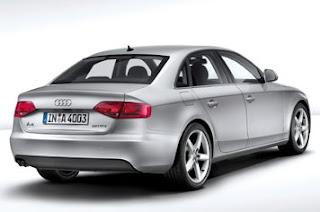 You’re looking at the first official pictures of the new, fourth-generation Audi A4, a car that Ingolstadt is hoping can steal even more of the European junior executive market from BMW and Mercedes, with a mix of improved dynamics, evolutionary design and a cheaper entry-level price tag. Behind its familiar design, the new Audi A4 features new underpinnings, advanced engine technology and the latest safety features. The new premium saloon will make its debut at the Frankfurt motor show in two weeks and will go on sale in the UK in January 2007.Prices on this new A4 remain under wraps for the moment, but we can confirm the starting price will be under £20,000, making it cheaper than today’s entry-level 1.8T at £21,350.
You’re looking at the first official pictures of the new, fourth-generation Audi A4, a car that Ingolstadt is hoping can steal even more of the European junior executive market from BMW and Mercedes, with a mix of improved dynamics, evolutionary design and a cheaper entry-level price tag. Behind its familiar design, the new Audi A4 features new underpinnings, advanced engine technology and the latest safety features. The new premium saloon will make its debut at the Frankfurt motor show in two weeks and will go on sale in the UK in January 2007.Prices on this new A4 remain under wraps for the moment, but we can confirm the starting price will be under £20,000, making it cheaper than today’s entry-level 1.8T at £21,350.
Audi has placed a heavy emphasis on dynamics with the new A4 in a bid to challenge BMW’s 3-series and the Mercedes C-class, while continuing to fend off more affordable but improving rivals such as the Volvo S60 and Saab 9-3. It will be available with Audi’s Drive Select, which allows the driver to tailor up to 24 suspension, steering assistance and transmission response settings to his own taste. At the heart of the new car is Audi’s modular longitudinal platform (MLP), as used beneath the mechanically identical A5 Coupé. Supporting both front-wheel drive and four-wheel drive, MLP moves the front axle 154mm further forward than that of the outgoing model, and adds widened tracks to provide the new A4 with what Audi describes as a “vastly improved weight distribution”.
The suspension — a mixture of a four-link arrangement at the front and multi-links at the rear — is made almost entirely from aluminium, which helps to reduce weight. Despite the fact that the new car is larger all round, Audi claims the weight of the bodyshell has been cut by 10 per cent.Subtly tweaked design:Audi’s designers have not attempted to do anything new with the A4’s exterior, which takes cues from the A5; the A4 will be built alongside its coupé sibling at Audi’s Ingolstadt headquarters. The Bauhaus-inspired lines of the outgoing A4 have been replaced by an edgier appearance first hinted at on the Walter de’Silva-penned Nuvolari concept in 2004, and now reflected on just about every Audi model. The new A4 inherits a conservative, evolutionary look, therefore. Highlights include a prominent single-frame grille, LED sidelights, a heavy shoulder line and a convex treatment to the rear end – but nothing we haven’t already seen from the brand.At 4703mm long and 1826mm wide, the new Audi A4 is 118mm longer and 56mm wider than the outgoing car. It also rides on a wheelbase that has grown by 168mm in all, to 2808mm — just 37mm shorter than the A6. The drag coefficient of 0.27 is the lowest in the Audi line-up, due partly to tighter shutlines that improve the airflow over the car.
The new A4’s cabin architecture — including the dashboard, switchgear and instruments — is shared with the A5, and offers an electrically operated handbrake, automatic air conditioning and six airbags as standard. Audi’s MMI (multi-media interface) will be optional, together with sat-nav.
Although the engine and other ancillaries have been moved back in the body for improved weight distribution, Audi says the length of the cabin has grown by 20mm, with rear kneeroom extending by 36mm, thanks partly to the rear bench being set further back in the wheelbase. Boot space has grown by 20 litres, the saloon now offering 480 litres.
At the A4’s launch, two direct-injection petrol engines will be offered in the UK. The first — a turbocharged 1.8-litre four-cylinder TFSI — produces 168bhp and 184lb ft. Audi claims 0-62mph in 8.6sec, a top speed of 140mph and 40mpg. Above it is a 3.2-litre V6 with 261bhp and 243lb ft, propelling the A4 from 0-60mph in 6.2sec and up to 155mph. But it’s the trio of diesel models that are expected to capture the majority of A4 sales in the UK. Among them is a new 2.0-litre four-cylinder common-rail engine that replaces the old 1.9-litre pumpe düse unit. With 141bhp and 236lb ft of torque from 1750rpm, it covers 0-60mph in 9.4sec, tops out at 134mph and averages 50mpg for a range exceeding 650 miles. It will also have the lowest CO2 emissions in the range, with 144g/km. Future models will improve on this figure. The other two diesels are a 2.7-litre V6 with 187bhp and 295lb ft, and a reworked version of today’s 3.0-litre V6, offering 236bhp and a heady 369lb ft. The most powerful petrol and diesel engines get four-wheel drive; the diesel uses an updated version of Audi’s “torsen” centre differential that directs 40 per cent of the drive to the front wheels and 60 per cent to the rear. Audi has also reworked its standard six-speed manual gearbox for the new A4. It now comes with a shift indicator on the dashboard displaying optimal shift points. Other transmissions include a six-speed automatic and Audi’s Multitronic CVT.
Following the saloon’s UK launch (the order book opens on 11 September, before the car is unveiled at the Frankfurt motor show), the A4 range will expand next year with the Avant, due in the UK next April. But we won’t be getting an A4 cabrio; that car will in effect be replaced by a convertible version of the A5 coupé. And don’t expect a new RS4 any time soon. Audi has repeatedly said it won’t do more than one RS model at a time, and we’re just about to get the new RS6. Audi also tends to wait for two years into a new model’s life cycle before launching an RS model, so an RS4 saloon wouldn’t be ready until 2009 at the earliest.
But that tactic could change. Replacing the A4 cabrio with the A5 will result in no RS4 cabrio, a vital model for the U.S market. That could mean an RS5 cabrio and coupé running alongside the RS4 saloon to provide rivals for BMW’s forthcoming M3 saloon and cabrio.
Tuesday, August 28, 2007

The ultra-small commercial vans by Fiat, Citroen and Peugeot will soon be revealed to the world, but in the meanwhile our spy photo shows the Fiat Fiorino undisguised. The first time this van was sighted undisguised was when it was parked in a small town in Italy but now we have a green production vehicle parked somewhere in Italy.
These vans will be wearing funky loud exterior colors to distract customers buying small-car based MPV's; Toyota Verso, Ford C-Max, Citroen C4 Picasso etc.
The vans will be available as commercial vans and people carriers. Prices could start around £8,000 and it will slot below the Fiat Doblo in the Fiat line-up.


 The first sighting of the next Hyundai Getz was in Germany in a car park but now Hyundai has descended to the Spanish mountains to do some hot-weather testing on their next generation B-Segment car.
The first sighting of the next Hyundai Getz was in Germany in a car park but now Hyundai has descended to the Spanish mountains to do some hot-weather testing on their next generation B-Segment car.
The name Getz could be replaced in Europe with "i20" so its in sequence with the recently launched Hyundai i30.
The new supermini has grown considerably compared to its predecessor. Judging by it's size, its almost as long as the Vauxhall/Opel Corsa.
A few interior shots reveal the test cars having a satellite navigation built into the centre console. Hopefully, Hyundai will offer this standard on upper grades, but if not it should be optional. The air vents on the test car are rectangular and there will be a 3 spoke steering wheel but there is no sign of steering-wheel audio controls.
The 'i20' will go on sale mid 2008 across Europe with a possible price tag of £6,995 for the entry level model.




 Jaguar is proud to announce the all-new 2009 XF - a stunning four-door Jaguar that combines the style and performance of a sports car with the refinement, space and sophistication of a luxury sedan.
Jaguar is proud to announce the all-new 2009 XF - a stunning four-door Jaguar that combines the style and performance of a sports car with the refinement, space and sophistication of a luxury sedan.
Scheduled to make its world debut at the 2007 Frankfurt International Motor Show in September, the new Jaguar XF is a reflection of the bold new design language that Jaguar will be using both now and in the future.
"As one of the most visually striking, technically sophisticated and driver-oriented sedan cars that Jaguar has ever produced, the XF clearly demonstrates the forward-looking focus that now defines the Jaguar brand," said Wayne Burgess, XF Senior Design Manager. "With its dramatic styling, powerful flowing lines and a distinctive front, the new XF looks like no other Jaguar. Yet it defines the new design language the company will be adopting for all future models."
The first impression of the new XF is its visual strength. It firmly emphasizes contemporary automotive style whilst maintaining Jaguar's core values. The new XF is sporty, muscular and dynamic -- made evident in its sweeping silhouette that was inspired by the new Jaguar XK sports car. There is a powerful grille, dramatic side window graphics and, of course, strong Jaguar rear haunches. The stance of the XF gives the car a 'ready to pounce' look that suggests latent power and energy.
The contemporary design theme is continued inside the XF with an interior ambience that is enriched by wood, aluminum and leather presented in a very modern way, unlike any other car manufacturer. With its sophisticated instruments and calm interior mood lighting, the XF moves away from traditional styling to a contemporary, sporting luxury theme. This is emphasized by features such as the all-new JaguarDrive Selector(TM), JaguarSense(TM) (an electronic control system that employs motion detecting sensors to activate certain vehicle features), unique phosphor blue interior lighting, and Bowers & Wilkins sound technology.
The new XF will be available in the US with a choice of two engines - a 4.2-liter naturally-aspirated V8 and a 4.2-liter supercharged V8. In naturally-aspirated form, the XF develops 300bhp and 310 lb.-ft. of torque. The supercharged version uses a highly efficient rotor-type supercharger that develops 420bhp and 408 lb.-ft. of torque. Both engines combine effortless performance, unrivalled character, an impeccable pedigree, and have a classic Jaguar blend of power and refinement.
All-new 2009 Jaguar XF At-A-Glance Highlights:
The XF is a four-door Jaguar that combines the style and performance of a sports car with the refinement, space and sophistication of a luxury sedan.
The exterior styling of the XF is the first result of Jaguar's new design language in a sedan. With interior design that is the equal of the exterior in terms of crafted execution and visual excitement, the XF offers a truly contemporary, luxury environment.
The coupe-like lines of the XF belie the amount of space inside: there is room for five adults in comfort, generous interior stowage and a trunk capacity of 17.6 cu. ft. (500 liters), plus the opportunity to fold down the rear seats and add a further 14.8 cu. ft. (420 liters).
Jaguar craftsmanship adopts a sharp new edge on the XF. Sophisticated instrumentation, a touch-screen, modern materials and graphics complement new 'surprise and delight' features. Upon entry to the XF, the start button pulses, like a heartbeat. Start the engine and the JaguarDrive Selector(TM) rises into the palm of the hand, while rotating vents turn from their flush, 'parked' position to their functional open position.
Improved torsional stiffness delivers refinement and dynamic performance - underpinning the driver-focused yet remarkably comfortable driving experience.
The XF will be available from launch in the U.S. with two different engines - 4.2-litre naturally-aspirated V8 and 4.2-liter supercharged V8 - all featuring Jaguar's proven six-speed automatic transmission with steering-wheel-mounted paddles for manual gear selection (Jaguar Sequential Shift(TM).
Key driver aids on the XF include Electronic Brake Assist, Electronic Brakeforce Distribution, Anti-lock Braking System, Dynamic Stability Control, Cornering Brake Control and Engine Drag Torque Control. And, for the first time in a Jaguar, Understeer Control Logic which decelerates the car and helps to restore grip to the front wheels when required.
Three trim levels will be offered in the U.S. market - Luxury, Premium, Luxury and Supercharged levels.
The first cars will be delivered to U.S. customers in March 2008.
Pricing for the North American market will be announced in November 2007.
UK Pricing:
NEW JAGUAR XF PRICES ANNOUNCED – RESIDUAL VALUES BEST-IN-CLASS:
The £33,900 OTR price secures the 2.7-litre V6 diesel or the 3.0-litre V6 petrol. A choice of 4.2-litre V8 models – one of them with a supercharged engine – is also available, with prices from £44,500. All XFs feature a sophisticated six-speed automatic transmission that includes a unique, all-new JaguarDrive Selector – an industry first rotary shift interface – and the Jaguar Sequential Shift™ System with steering-wheel mounted paddles for one-touch manual control.
The full XF model range in the UK is as follows:
Trim Engine
2.7-litre V6 diesel
3.0-litre V6 petrol
2.7-litre V6 diesel
4.2-litre V8 petrol (naturally aspirated - n/a)
Industry-leading residual value experts CAP and EurotaxGlass’s have both put the XF under the microscope and both will be quoting residual value after 36 months / 36,000 miles of 50% of original value* for the 2.7-litre diesel Luxury model. These figures from both experts mean the XF 2.7-litre diesel Luxury is best-in-class against rivals BMW, Mercedes, Lexus and Audi. CAP has concluded that the nearest rival, the BMW 525d SE will retain 45.3% of its original value over the same period.
Martin Ward, Manufacturer Relationship Manager for CAP Motor Research said: “The new Jaguar XF has not only caught up with its nearest competitors, but has now overtaken them. Jaguar has proved that a well built, well specified and well priced car that has fantastic styling can break the mould, and should be a success the world over.”
EurotaxGlass’s figure of 50% for the XF 2.7-litre diesel Luxury is best-in-class ahead of the BMW 525d at 48% and the Audi A6 3.0 V6 TDI Quattro SE at a rating of 49%. The XF 3.0-litre V6 petrol is expected to retain 45% of its original value making it best-in-class over the BMW 530i, the Audi A6 3.2 FSI and the Mercedes-Benz E350.
Kevin Gaskell, CEO of EurotaxGlass’s has a similar opinion. He said: “The whole XF package is class-leading. With an array of impressive standard equipment, competitive pricing and outstanding styling, we have concluded that it will be a desirable car with best-in-class residual values of 50%.”
Jason King, UK Head of Market Intelligence for EurotaxGlass’s continued: “The second of Jaguar’s new generation of products, the XF is bound to turn as many heads as the XK has since its arrival. The bold, elegant design is sure to appeal to a much wider audience. Current drivers of BMW, Audi and Mercedes-Benz will have to consider the Jaguar when it is time to change – many of whom will never have experienced the brand before. Our strong residual value positioning of the XF reflects this, and underlines the resurgence of Jaguar.”
With a top speed of 143 mph, the XF 2.7-litre diesel can reach 0-60 in 7.7 seconds and has a combined CO2 of 199 g/km, meaning it falls within UK Tax Band ‘F’. At this level it would not be subject to the proposed high level London congestion charges.
The new Jaguar XF, which fuses the style and performance of a sports car with the refinement, space and sophistication of a luxury saloon, has a generous array of equipment across the range.
Luxury:
The ‘Luxury’ specification is the starting point for XF ownership and is available to order with the 2.7-litre diesel or the 3.0-litre petrol engines. Highlights include 8x8 way adjustable leather trimmed seats, 7” colour Touch-screen display, Navigation system, Bluetooth® Telephone Connectivity, 6-disc in-dash CD changer, Rear parking aid, interior mood lighting, heated exterior mirrors with electric adjustment, 17” alloy wheels, Automatic Climate Control and Cruise Control with Automatic Speed Limiter.
Premium Luxury:
If customers choose to move up a level they can choose the ‘Premium Luxury’ specification for an increment of £3,600 with both the 2.7-litre diesel and the 3.0-litre V6 petrol engines. The 4.2-litre V8 petrol (n/a) also comes with ‘Premium Luxury’ specification offering, in addition to the Luxury model’s standard features, highlights such as 10x10 way heated Softgrain leather seats with lumbar adjust, 18” alloy wheels, Jaguar 320W premium sound system with 8 speakers and sub-woofer, driver's seat memory function, heated windscreen and Softgrain leather stitched and tailored instrument panel and door top rolls.
SV8:
The SV8 specification is available on the 4.2-litre supercharged model only and customers can enjoy additional features such as active heated and cooled front seats, 20” alloy wheels, Bi-Xenon headlamps with automatic levelling and headlamp washers and CATS (Computer Active Technology Suspension).
Monday, August 27, 2007
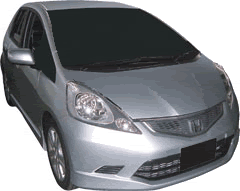
Ok so its not official whether the next Honda Jazz/Fit will actually look like this but this image has leaked onto the net showing how the next supermini MPV could look like.
For the first time the next Jazz will be offered a diesel engines along with some petrol engines and an optional glass roof will be offered in some markets.
The interior, particular the steering wheel will come off the CR-V SUV and the European Civic.
Overall, the new car is curvier, wider and taller than its predecessor.




 Meet the all new American alternative to a Ford S-Max, Vauxhall Zafira or Volkswagen Touran; this is the Dodge Journey, which will be introduced as a production model at the Frankfurt motor show in a fortnight and it wil go on sale in the UK early 2008.
Meet the all new American alternative to a Ford S-Max, Vauxhall Zafira or Volkswagen Touran; this is the Dodge Journey, which will be introduced as a production model at the Frankfurt motor show in a fortnight and it wil go on sale in the UK early 2008.
This new seven-seat Dodge Journey MPV has been hitherto known to us by its development codename: Crew/NCC. It will replace the smallest version of Chrysler’s legendary Voyager minivan in the US car group’s UK model line-up.
Based on the Chrysler/Dodge/Jeep platform that underpins at least five other models, the Journey is ostensibly a stretched Avenger; it sits on a 2890mm wheelbase, 124mm longer than an Avenger, enough to squeeze in a third-row of seats, which will be standard in the UK.
Rear space is claimed to be better than the Ford S-Max, allowing the Journey to sit just below the voluminous Grand Voyager in the brand line-up.
Interior flexibility and cabin storage are the Journey’s trump cards. The car’s second row of seats slide and feature Volvo-like pop-up child booster seats, and there’s a plethora of storage bins, including a pair of can-coolers in the rear floor able to store up to 12 drinks cans each.
Two engines options will be available — the VW-sourced 140bhp 2.0 diesel and a four-cylinder 145bhp 2.4-litre petrol shared with Mitsubishi — both of which already feature in Dodge’s models. Manual and auto boxes will be offered with both engines, the diesel with a six-speed dual-clutch transmission, the petrol with a less cutting-edge conventional four-speed auto. UK might not be offered the all-wheel drive V6 petrol version sold in the US.
Prices are promised to be “highly competitive,” starting at around £19,000 to match the entry-level Voyager rising to the early-£20ks for a top-spec SXT model.
 The Renault Clio based mini-MPV, Modus will receive a facelift. Our spies captured a few prototypes running around the back roads of France.
The Renault Clio based mini-MPV, Modus will receive a facelift. Our spies captured a few prototypes running around the back roads of France.
The front face is set to be mixed between the current Clio and Scenic although Modus did get a small revision done to its headlamps and tail lamps last year which was marketed as a 2007 model year. The new Modus could be unveiled at the Paris Motorshow next year.
Engines could stay the same but a long wheelbase Modus will also arrive on the scene in 2008. Its currently dubbed "Grandé Modus" and should offer class leading rear legroom or boot room. The new "Grandé Modus" will sit above the regular Modus in the Renault line-up.
Saturday, August 25, 2007
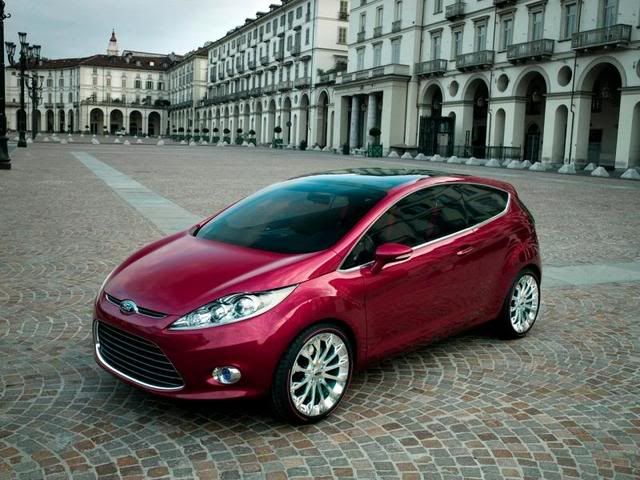
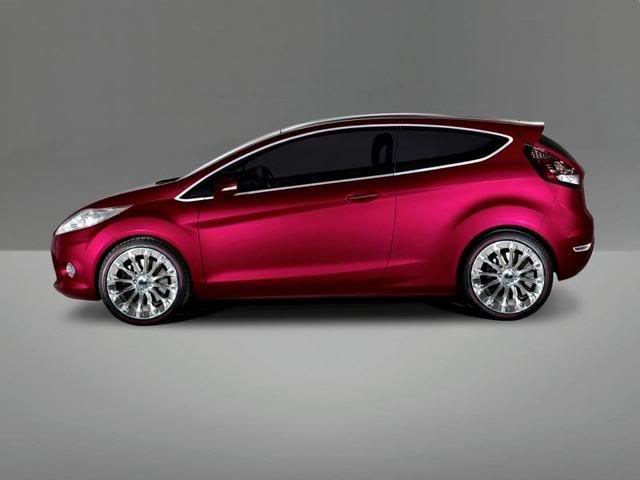
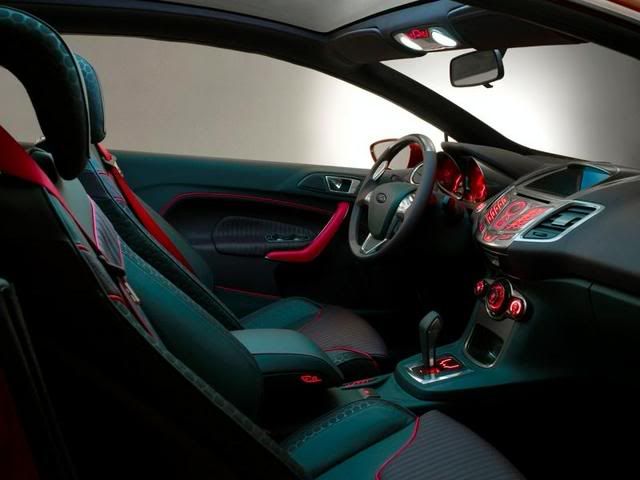
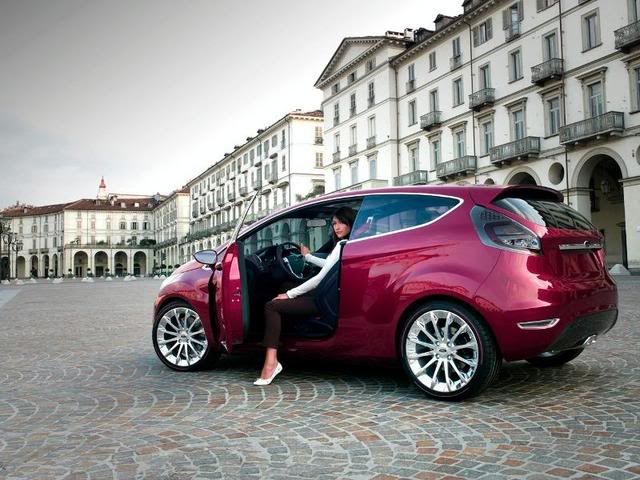 What you are currently looking at could be the next Ford Fiesta. Ford has dropped the strongest hints about the shape and size of next year’s Fiesta in an ultra-sporty three-door concept called Verve, one of the stars of next week’s Frankfurt Show.
What you are currently looking at could be the next Ford Fiesta. Ford has dropped the strongest hints about the shape and size of next year’s Fiesta in an ultra-sporty three-door concept called Verve, one of the stars of next week’s Frankfurt Show.
The car is the first of three Fiesta concepts — all with near-production shapes — to be unveiled in the next four months. The others are believed to be a four-door saloon for Beijing in November and a US-spec five-door hatch earmarked for Detroit next January.
Verve, which uses the all-new chassis and component set just launched in the Mazda 2, is clear evidence of Ford’s intention to dramatically lift the emotional design content of its small cars. Martin Smith says his team has been greatly encouraged by the results of several years’ research among “design progressives” — notably young female supermini owners across Europe.
This group has already okayed radical features like the Verve’s aggressive egg-crate grille, the radically raked windscreen, the coupe-like roofline and the fascia design, which draws heavily on mobile phone technology. Ford won’t confirm it, but it seems the only major Verve feature that won’t make production is its lack of a centre pillar and use of frameless doors.
The car, which shares the present Fiesta’s overall length and wheelbase, also shows Ford’s intention to call a halt to “dimension creep” in B-cars. The Mazda 2 has already won copious praise for being slightly smaller and lighter than its predecessor. The present Fiesta is smaller than rivals like the Fiat Punto, Opel Corsa and Peugeot 207, and Ford has established that its research group wants it kept that way.
The new Fiesta, to be launched in various versions between mid-2008 and 2010, will be powered by a comprehensive range of Ford-PSA diesels and Ford-Mazda petrol engines.
Thursday, August 23, 2007
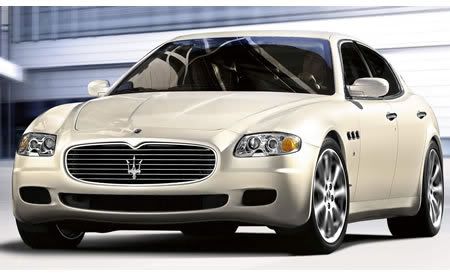 If you were one of the first Brits to take delivery of a Maserati Quattroporte Automatic, it might be wise to schedule a trip to the dealership in the next couple of weeks. That’s because the marque is about to recall the first 90 examples of the car sold in the UK in order to rectify a fault that could disable its electronic stability control system.
If you were one of the first Brits to take delivery of a Maserati Quattroporte Automatic, it might be wise to schedule a trip to the dealership in the next couple of weeks. That’s because the marque is about to recall the first 90 examples of the car sold in the UK in order to rectify a fault that could disable its electronic stability control system.
The Italian brand’s problem is with the ECU software that controls the ‘Maserati Stability Program (MSP)’. When the car’s battery is low, a bug in the software prevents any signals sent by the car’s electronic sensors from being received by the ECU. The car’s onboard computer then assumes that the sensors are faulty, and disengages the car’s traction and stability control systems; its antilock brakes, however, will continue to work.
“If you use your Quattroporte every day, you’ll probably never encounter the fault,” a company spokesperson told us, “and if you do, it’ll go away once you charge the battery and restart the car.”
“We’ll be informing the affected owners by post in the next few weeks, and they’ll be asked to bring their cars back to their nearest service outlet, where a new ECU will be fitted free of charge. The fix should only take a couple of hours.”
Maserati was quick to assure us that it had updated its factory stock of ECUs to fix the problem on new-built cars some months ago, so if you buy a Quattroporte Automatic today, you’ve got nothing to be concerned about. However, it’ll be a pretty costly episode for the Trident overall, with 90 cars affected here, 30 affected in Australia, and in excess of 700 in the USA.
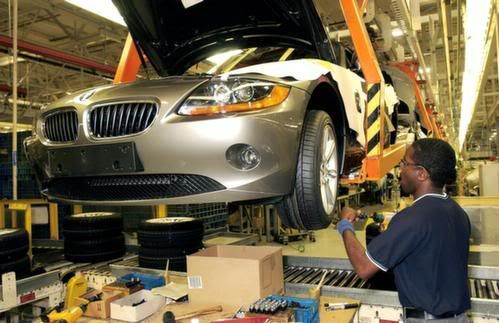 Although nothing has yet been confirmed, Spartanburg Herald-Journal and BMW's suppliers in the Spartanburg area are assured that BMW will move the production of the next generation Z4 to Regensburg, Germany to allow the Spartanburg plant to focus solely on BMW's X-range Sports Activity Vehicles.
Although nothing has yet been confirmed, Spartanburg Herald-Journal and BMW's suppliers in the Spartanburg area are assured that BMW will move the production of the next generation Z4 to Regensburg, Germany to allow the Spartanburg plant to focus solely on BMW's X-range Sports Activity Vehicles.


 We previously reported on the upcoming Dodge Ram pick-up truck and what we showed you were pictures of a cooling mule but eariler this week, spies captured the pre-production Dodge Ram undergoing hot-weather testing in Death Valley andmanaged to snap shots of a couple different versions of Dodge's half-ton truck. At a recent industry conference in Traverse City, Michigan, Frank Klegon, Chrysler's executive vice president of product development, reiterated earlier statements that Chrysler is focused on producing advanced engines for all of its vehicles, including the Ram. "A significantly upgraded version of the renowned 5.7-liter Hemi V8 with gains in fuel efficiency, refinement, horsepower and torque will debut in the 2009 model year," said Klegon. We don't expect the Hemi to receive an increase in displacement; instead it will rely on technology for most of its newfound power. Chrysler will also offer a new, more fuel-efficient version of the E85 flex-fuel 4.7-liter base V8 engine, shared with the Dodge Dakota midsize pickup and featuring a 30 percent increase in horsepower and a 10 percent increase in torque over the old 4.7-liter V8.
We previously reported on the upcoming Dodge Ram pick-up truck and what we showed you were pictures of a cooling mule but eariler this week, spies captured the pre-production Dodge Ram undergoing hot-weather testing in Death Valley andmanaged to snap shots of a couple different versions of Dodge's half-ton truck. At a recent industry conference in Traverse City, Michigan, Frank Klegon, Chrysler's executive vice president of product development, reiterated earlier statements that Chrysler is focused on producing advanced engines for all of its vehicles, including the Ram. "A significantly upgraded version of the renowned 5.7-liter Hemi V8 with gains in fuel efficiency, refinement, horsepower and torque will debut in the 2009 model year," said Klegon. We don't expect the Hemi to receive an increase in displacement; instead it will rely on technology for most of its newfound power. Chrysler will also offer a new, more fuel-efficient version of the E85 flex-fuel 4.7-liter base V8 engine, shared with the Dodge Dakota midsize pickup and featuring a 30 percent increase in horsepower and a 10 percent increase in torque over the old 4.7-liter V8.


 Subaru's finally released prices for most of the all-new Impreza range, and they don't necessarily make the unusual styling any more palatable. What should make things more attractive, however, are details of the now-confirmed new WRX.
Subaru's finally released prices for most of the all-new Impreza range, and they don't necessarily make the unusual styling any more palatable. What should make things more attractive, however, are details of the now-confirmed new WRX.
The new WRX will be available from November for an expected cost price of around £21,500, followed by a range-topping WRX STi in Spring 2008.
The WRX comes with an updated version of the last car's 2.5-litre turbocharged flat four powerplant. It will pack the same 227bhp as its predecessor, but at 5200rpm instead of 5600rpm, and the same 236lb ft, but at 2800rpm instead of 3600rpm. It'll perform the benchmark 0-60mph sprint in 5.4sec (down from 5.9sec), but fuel economy is down from 27.4 to 27.2mpg, which also means CO2 emissions are up from 244 to 246g/km.
Power is put to the wheels via a five speed manual gearbox, and a centre diff (as on all new Imprezas), but the old WRX's rear viscous limited-slip diff has been swapped for a lighter mechanical one.
Interior space should be much-improved over the old car, thanks to a longer wheelbase. Refinement should also be better; Subaru says it's targeting mainstream rivals such as the Honda Civic, Mazda 3 and VW Golf
The 100bhp Impreza:
At the other end of the range from the WRX is the 1.5 litre 106bhp 1.5R, which starts at £12,495. As with all new Imprezas, it's got all-wheel drive, including a low-range transfer 'box, plus standard equipment that includes alloy wheels, climate control, a CD player, height and reach adjustable steering wheel, foglamps, and driver, passenger, side and curtain airbags. Gearboxes are five-speed manuals or four-speed autos.
It's not quick, at 13.7sec to 60mph and 109mph flat out, but we're expecting it to have the same excellent dynamics as its predecessor. It manages a reasonable 37.7mpg combined. There's also an automatic version for £13,495, which is even slower, at 14.8sec and 104mph, but manages the same economy.
Splash out £14,995 for the 2.0R (£15,995 for the auto) and you get 148bhp and 145lb ft, which lowers the 0-60mph time to 9.2sec (11.3 auto) and the economy to 33.6mpg (34.4). You also get 16-inch alloys (up from 15), xenon lights and heated mirrors.
More upmarket is the 2.0 RX, which comes with front and rear spoilers, side skirts, a chrome exhaust end-cap, a rear bumper diffuser and 17-inch alloys. Inside there's sat-nav, cruise-control and a 10-speaker CD system for £17,495 (£18,495 for the auto).
Grey model is the entry level 1.5R followed by 2.0R in red and Impreza RX is in silver







